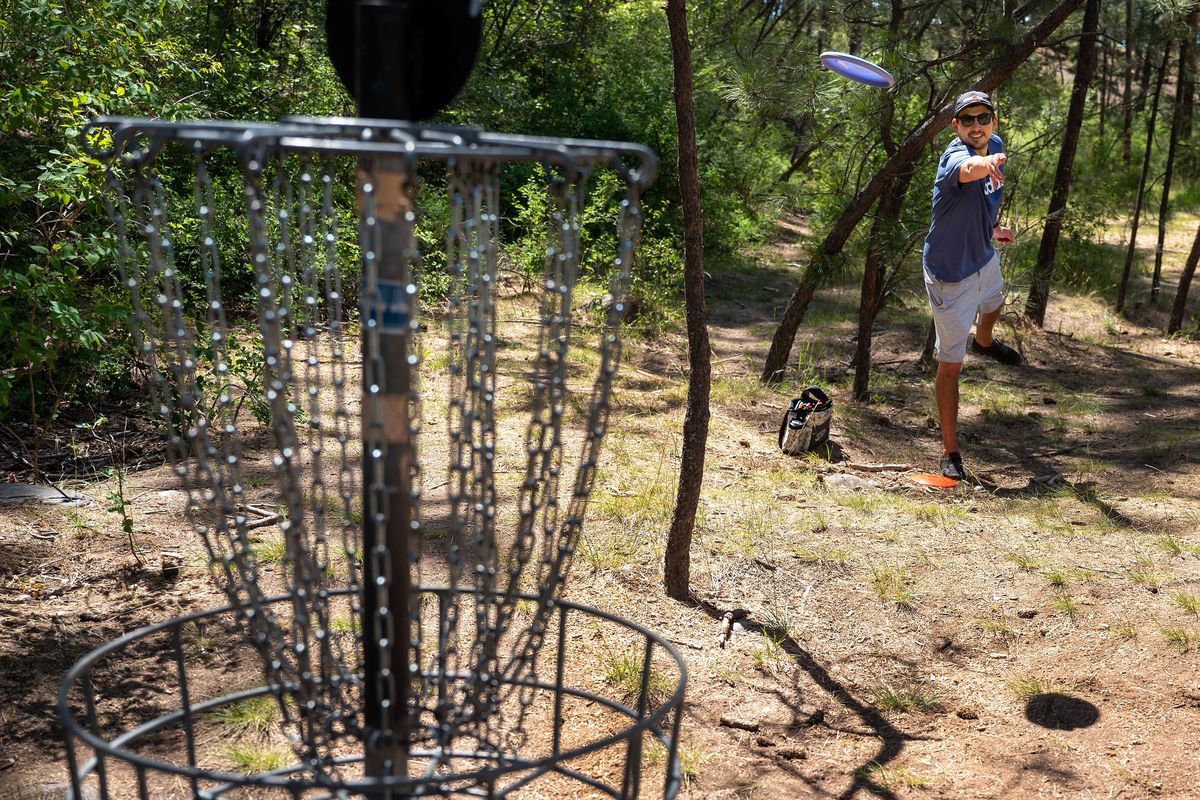Collateral improvements: Spokane stormwater project means upgrades at Downriver Disc Golf Course

At 9:30 a.m. on a sweltering Tuesday, golfers were playing 18 holes at the Downriver Disc Golf Course, trying to thread their discs between shrubs or loop them around towering ponderosas.
It’s not surprising that people were willing to sweat buckets and wake up early to hit the links here. The northwest Spokane course is picturesque, wrapped in a bend of the blue-green Spokane River and full of blooming flowers and bird song.
While the course is beautiful, it’s also a bit disheveled. That should change soon, when the course gets a renovation and new layout this summer as part of a major stormwater management project.
The disc golf course upgrades are a collateral benefit. The course is being rearranged so the city can install infiltration ponds that will filter pollutants out of stormwater from the Cochran Basin. The disc golf makeover is tangential.
“We’re managing a concern that we have, but at the same time we’re delivering a better recreational result for the community,” Spokane Public Works Director Marlene Feist said.
Stormwater management probably isn’t at the forefront of many Spokanites’ minds, but the city has been working to upgrade its system for decades. Cochran Basin accounts for a large chunk of the city’s stormwater management area.

The basin covers 5,328 acres of northern Spokane and represents about 60% of the city’s separated stormwater system. It stretches east to west from Alberta Street to Market Street and north to south from Francis Avenue to Montgomery Avenue.
All of the Cochran Basin stormwater that doesn’t trickle into the ground has to go somewhere. Every year, the city dumps between 350 and 500 million gallons of Cochran Basin stormwater into the Spokane River. When it rains, a big pipe near the TJ Meenach Drive Bridge gushes water.
That might sound benign. Stormwater’s just rain and snowmelt, after all – at least at first. But as it flows down streets, it picks up a slew of contaminants: Motor oil, bits of rubber, metal shavings and landscaping chemicals, to name a few.
Those contaminants pollute the Spokane River and can have negative impacts on wildlife. There isn’t an immediate need for Spokane to clean up the Cochran Basin stormwater system – there aren’t any pressing government mandates, at least – but Spokane’s estimated $20 to 30 million investment in pipes, storage tanks and infiltration ponds for the Cochran Basin project will help the city comply with possible future regulatory changes.
The disc golf course infiltration ponds are the key to keeping toxins out of the river.
There will be six ponds, costing $2.5 million, which will hold and filter stormwater. Plants on the ponds’ edges will suck up contaminated water. Sand, compost and fine materials will filter out more pollutants as water seeps into the ground.
“The goal here is to treat it like nature would,” Feist said.
Kyle Twohig, Spokane’s engineering services director, said the infiltration ponds might sound low-tech, but they do an excellent job cleaning stormwater before it re-enters the river.
“By the time it’s 10 feet underground it’s really, really clean,” Twohig said.
The ponds will be able to handle most Cochran Basin rainfall and snowmelt events on their own. Twohig said they’ll be built to hold 240,000 cubic feet of stormwater. That’s how much water it takes to fill 2.7 Olympic swimming pools.
The system won’t be able to handle the biggest storms and snowmelts, but Twohig said the ponds are designed to handle everything except six-month rain events. That means roughly twice a year stormwater will either go untreated into the river or into additional storage capacity that will be built next year along the TJ Meenach Drive.
Twohig said the pond water won’t pose any danger to people playing disc golf. Dumping huge amounts of stormwater into the Spokane River might cause ecological harm, but stormwater’s not going to injure someone’s hand if they have to reach in for a stray disc.
The asymmetrical ponds will cover a large chunk of the disc golf course. They’ll be incorporated into the new course layout – golfers will have to throw over the water on several holes.
The infiltration pond project hasn’t yet gone out to bid, but Feist said construction will begin this summer and end in the fall.